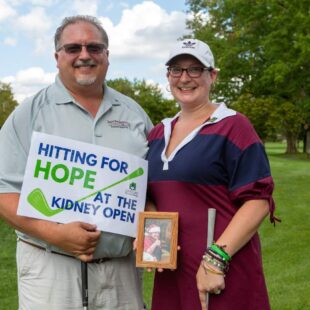Five Tips for Navigating the Hospital Cafeteria After Transplant
Walk around the whole cafeteria to see the selection. Cafeterias may change the menu daily, and sometimes they have seasonal specials. As you walk around, take note of which options fit your nutrition goals. For instance, are you trying to lose, gain, or maintain your weight? What did your dietitian recommend?
by: Kirsten Diegel
- Take a Lap – Walk around the whole cafeteria to see the selection. Cafeterias may change the menu daily, and sometimes they have seasonal specials. As you walk around, take note of which options fit your nutrition goals. For instance, are you trying to lose, gain, or maintain your weight? What did your dietitian recommend?
- Food for Thought – Although the staff works hard to prepare foods that are safe to eat, transplant patients need to be especially careful. This is one reason why dietitians spend time educating transplant patients before discharge. Examples of foods to avoid include deli meats and cheeses, salad bars, raw nuts and sprouts, etc. Refer to FDA’s list about food safety as a refresher. If needed, contact your dietitian for an additional copy of Food Safety for Transplant Patients.
- Balance Your Plate – Imagine your plate is divided into 4 sections; fruit, vegetable, protein, and whole grains. Aim to have a plate that has food in each section. Of course, this can be a challenge. At a minimum, try to pair a protein (chicken, turkey, fish, beef, peanut butter, milk, etc.) with at least one other food group (fruit, vegetable, or grain). Having a serving of protein will help keep you feeling full!
- Sip on This – Beverages can boost your calorie intake and weight, which may be a benefit for some but not so great for others. If you are trying to gain weight, high calorie beverages/fluids, such as whole milk, chocolate milk, fruit/vegetable combination juices, protein shakes are options to consider. On the other hand, if your goal is to lose or maintain your weight, water, unsweetened beverages, and low-fat or skim milk is your best bet. Remember: Canned beverages (ex. soda) are not recommended for transplant patients for food safety purposes.
- Keen on Clean – Before eating or drinking anything that you have purchased, take a second to use hand sanitizer to clean your hands, wipe your utensils with a napkin, and wash your fruit. That apple may have been washed in the kitchen, but who knows how many people picked it up before you selected it. During your meal, place your utensil on a napkin or on your plate rather than setting it directly on the table between bites.
About Kristen:
Kirsten Diegel graduated from University of Delaware and completed her Dietetic Internship through ARAMARK in Philadelphia. She is currently pursuing her Master of Science in Health Promotion at the University of Delaware while working as a Clinical Dietitian at Temple University Hospital. Kirsten has worked within the hospital system for 4 years and has been a part of the Lung Transplant Program, one of the oldest and most experienced centers in the region, for the last 3 years. Kirsten is an active runner who is working towards running the New York Marathon in 2017. Kirsten enjoys eating soy yogurt with fruit and almonds/walnuts as a snack to help fuel her workouts, although she will never say no to anything with chocolate.







